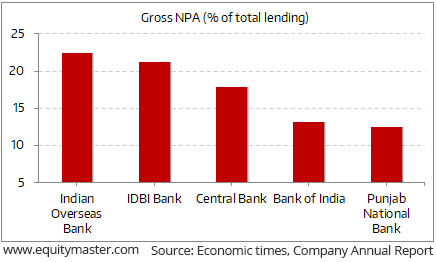
After opening the day higher, stock markets in India have continued their momentum. Sector indices are trading on a positive note with stocks in the realty sector and IT sector witnessing maximum buying interest.
The BSE Sensex is trading up 148 points (up 0.5%) and the NSE Nifty is trading up 48 points (up 0.5%). The BSE Mid Cap index is trading up by 0.9%, while the BSE Small Cap index is trading up by 0.8%. The rupee is trading at 63.90 to the US$.
In the news from the banking sector, the government has notified the Banking Regulation (Amendment) Act. The act allows government to authorize the Reserve Bank of India (RBI) to issue directions to banks to initiate insolvency resolution process to recover bad loans. Note that the government, along with RBI, is taking many steps to tackle the bad loan problem seen at most of the banks in India.
Earlier, last month, the RBI had identified 12 large accounts for resolution under the bankruptcy code.
Also, the RBI Governor Urjit Patel has said that the government and the RBI are working in close coordination to resolve large stressed corporate borrowers and recapitalize PSBs within the fiscal deficit target.
The bad loans at Indian banks have only been rising, as can be seen from the chart below:
Rising Bad Loans at Indian Banks

Gross non-performing assets (GNPA) of Indian banks rose from 9.2% in September 2016 to 9.6% in March 2017. GNPA refers to the total value of loans on which interest and principal income has not been received by the bank for more than ninety days. For some banks, the ratio of GNPAs to total lending is more than 20%. This means more than Rs 20 out of every Rs 100 lent is at the risk of not coming back.
The RBI expects the average GNPA ratio to increase to 10.2% by March 2018. It indicated that if macroeconomic conditions worsen, this number could go up.
The problem of bad loans is indeed quite severe and when we compare it with other global peers it looks daunting.















